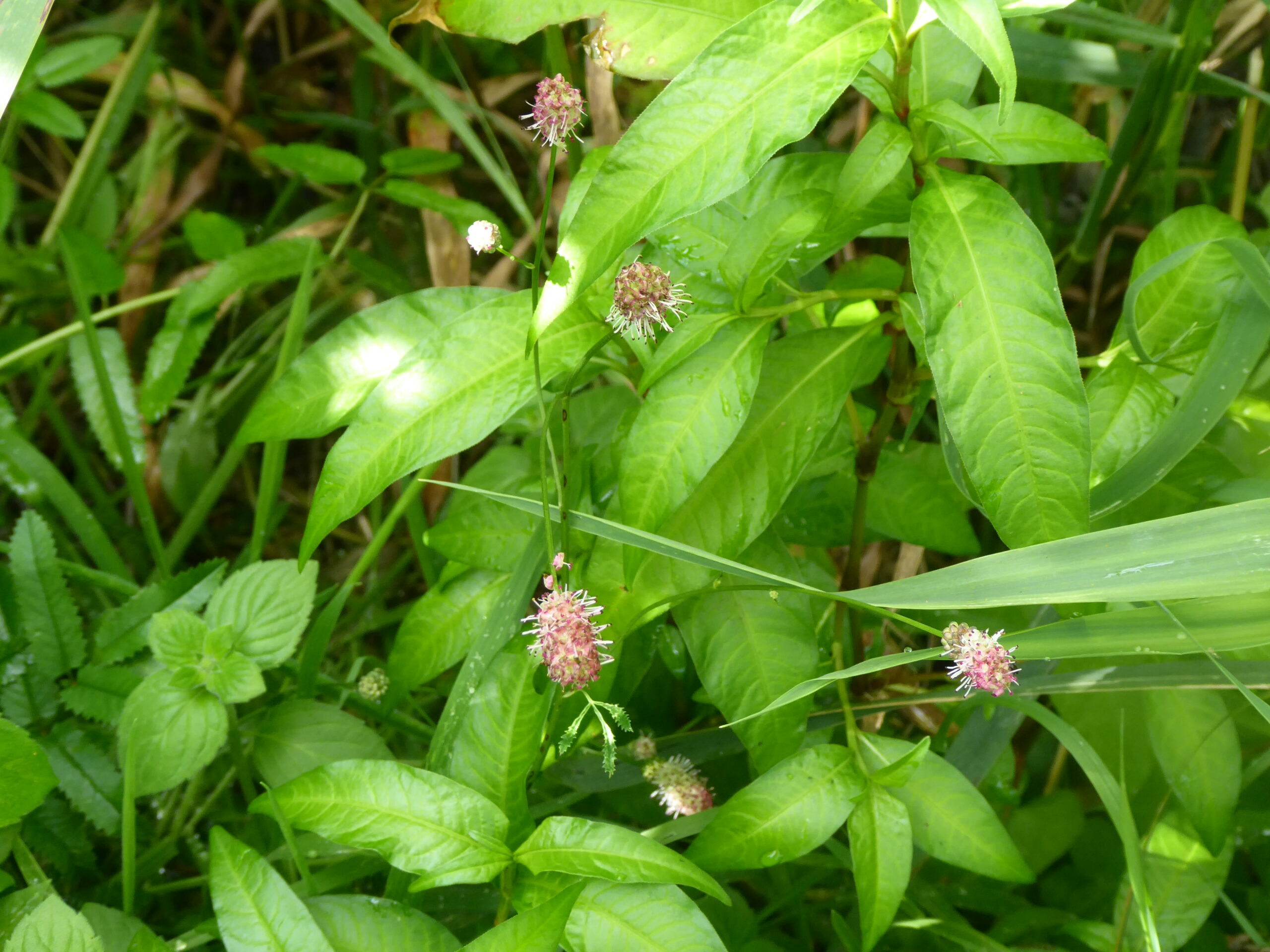Looking quite at home on the grassy knoll under our weeping willow, this clover-like flower caught my eye. But what was it? I found out it was a burnet and struggled to decide whether it was the Great Burnet, which loves wet places but should have been deep crimson without the black-tipped white stamens, or Salad Burnet, which also didn’t look quite right and prefers dry chalky grassland, so not here then. Further investigation turned up a perfect match in Sanguisorba ‘Pink Tanna’, which was not in my Collins guide. Then I realised that this was one that we had planted. Sanguisorba Tanna is Korean Burnet and is native to Eastern Asia, particularly Korea and China.
Oh.
Well, it obviously loves it under the willow, it loves moist, well-drained soil in a partially shaded location. So we should really move it, but our top garden is very dry, so I don’t think it would do well there. I looked on the RHS website and it said that although it wasn’t native, it was suitable for Wildlife Gardens and Wildflower Meadows in the UK and that it was generally free of pests or diseases. It’s obviously not spreading, as we planted it in 2020 and it is still one little plant. So, I will leave it for the time being.
But I won’t count it on the Tally.
